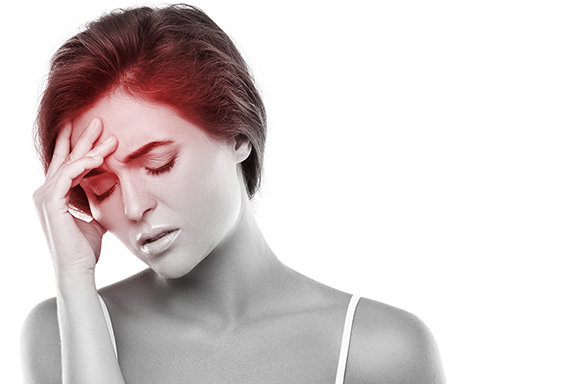
By J. Todd Gray, DMD, D.ASBA, Koala Center for Sleep & TMJ Disorders
Migraines are brutal headaches that affect an estimated 12 percent of adults in the United States. Migraines and headaches have some distinguishing features. Let’s discuss migraines and their risk factors and explore a few of the most common causes of these headaches.
What is a migraine?
A migraine is a neurological disease with extremely incapacitating neurological symptoms that can last for an hour, a day, or several days. The primary symptom is extreme pain in a focused area of the head, but there is a myriad of symptoms that people experience, including but not limited to the following:
- A throbbing or pulsing sensation
- Nausea / vomiting
- Pain in the ears
- Vision disruption
- Neck and shoulder tension
- Extreme sensitivity to light and sound
It is important to note that migraines and headaches are not the same. With a headache, the muscles between a person’s head and neck contract, causing tightness or a squeezing sensation around the head. Conversely, a migraine is a very distinct, intense pain, typically a severe throbbing pain with a potentially debilitating condition for the duration of the migraine. Migraines are identified mostly with light and sound sensitivity, as well as nausea.
What causes migraines?
For some people, migraines are chronic. Chronic migraines are a distinct disease if you are experiencing 8 to 15 migraine/headache days a month. However, a person can experience a migraine once in a lifetime or occasionally. Their occurrence varies, depending on the person and the risk factors involved. While a headache can turn into a migraine, the root cause of the pain may differ. Here are five of the most common triggers that can initiate a migraine:
- Environment
- Stress
- Physical factors
- Food and drink
- Sleep patterns / sleep apnea
It is believed that 39-million Americans have disabling, chronic headaches, and the economic costs due to job absenteeism, lost production, and medical expenses are estimated to be as high as $50 billion annually. Approximately 35 million also suffer from TMJ problems known as Temporomandibular Joint Disorder (TMJD), caused by an imbalanced bite. You may encounter broken teeth, fillings, loose teeth, and a toothache with no apparent cause. If you have any of these problems, you should see a dentist right away.
Tension headaches linked to TMJ disorder
Radiating pain in the face, jaw, ears, or neck can be an indicator of TMJ Disorder. A cracking or grinding sound generally accompanies the motion of jaw use. Stiffness in the temporomandibular joint makes it difficult to open and close your mouth, leading to facial tenderness with pain, along with ear pain and headaches. Jaw-locking and popping can also be a contributing factor.
TMJ disorder and dental treatments
More physicians are realizing the benefits of an integrated care approach for dental treatment of TMJ disorders, due to imperfect dental occlusion. TMJD oral appliances are gaining credibility within the medical professions due to successfully treated patients. We have a number of ENTs and neurologists who have referred their patients to us when their symptoms showed signs of TMJD. Simply normalizing the bite with a custom-fitted oral orthotic can help many headache sufferers. These non-invasive custom orthotics are created to find the true resting jaw position. This helps relax and promote healing of the muscles which in turn reduces headaches.
Finding the root cause of headaches and migraines can be a daunting task. Many of my patients have been to see several different specialists in an effort to resolve their frequent headaches before they are finally referred to me. Once I fit them with an oral appliance, their headaches and ear pain often disappear.
If you or someone you know deals with headaches, migraines, sleep issues, jaw pain, or ear pain, let Dr. Gray help get to the root of the problem. As a medical dental clinic, Koala Center for Sleep & TMJ Disorders® takes an integrated care approach with other medical professionals to ensure your long-term health. Dr. Gray also treats sleep apnea in adults and children. Contact them online at www.bloomingtonsleep.com or 309-319-6568. Their office is located at 2309 E. Empire in Bloomington.

